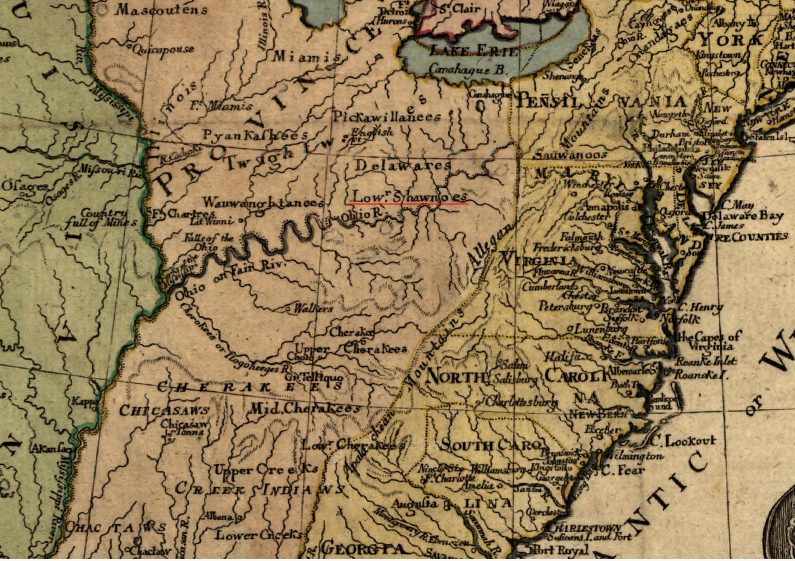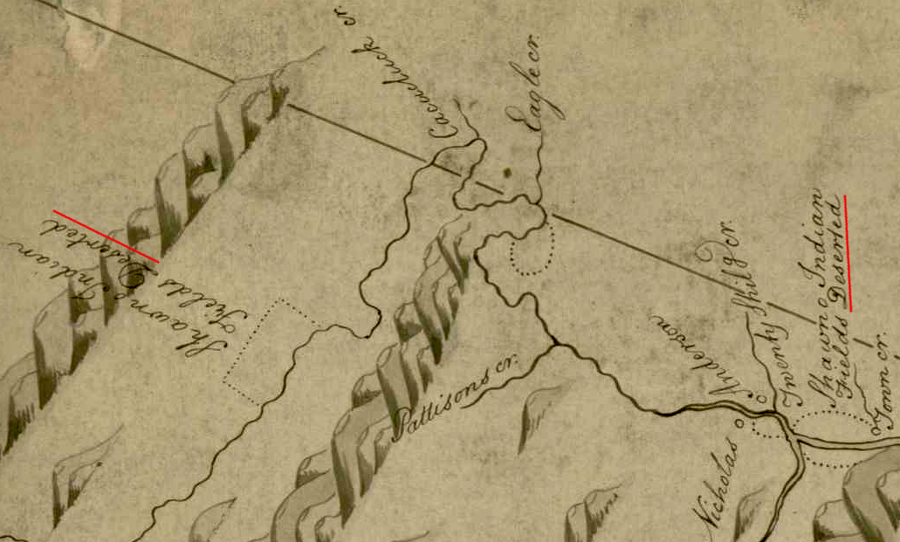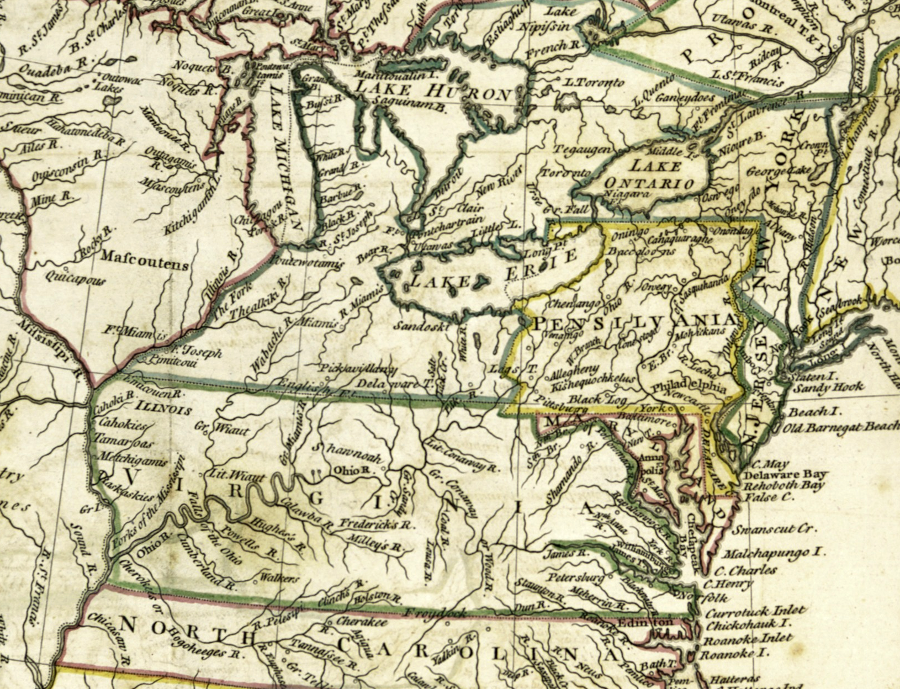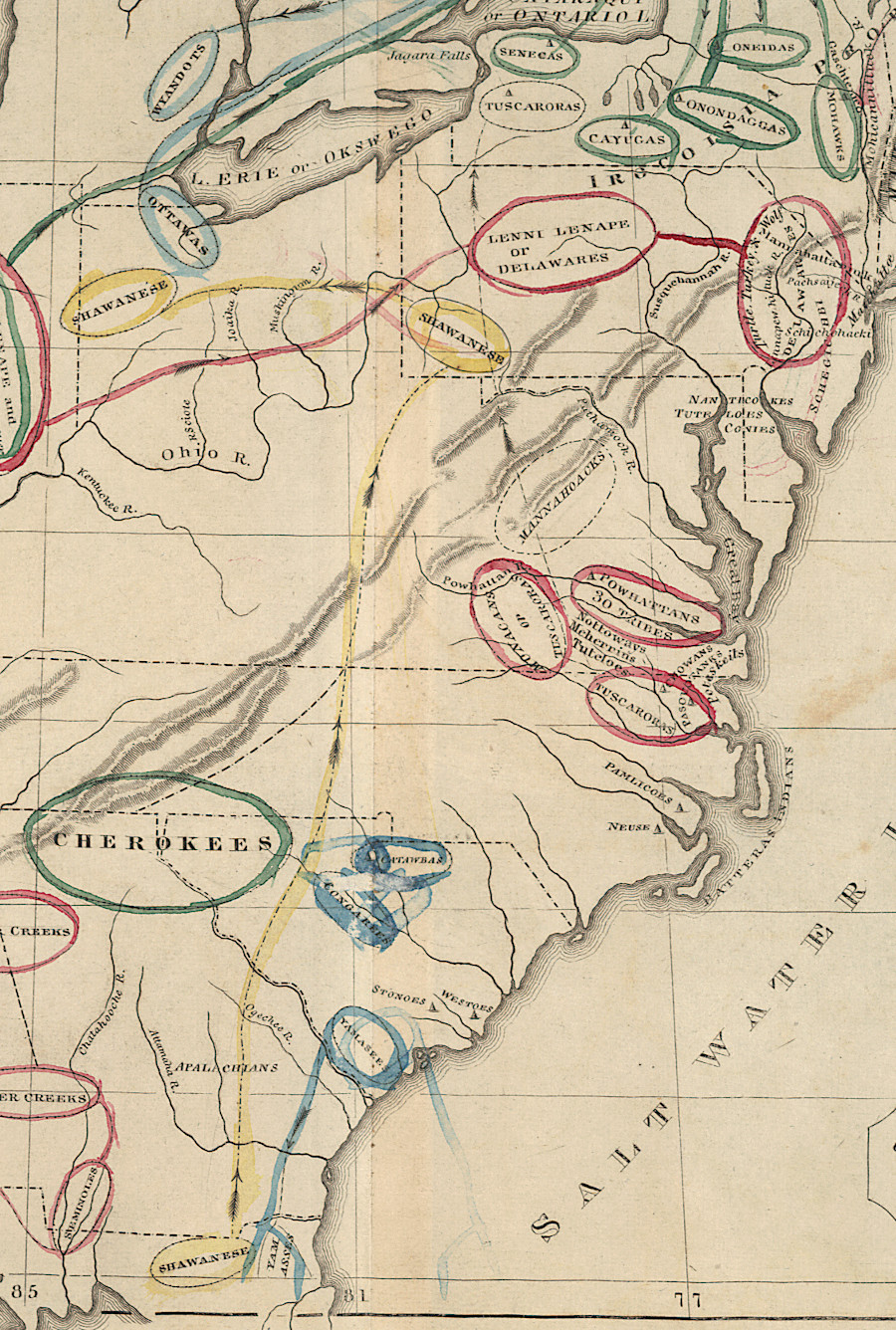
in 1783, the "Shawnoes" were concentrated on the Upper Ohio River in the northwestern territory still claimed by Virginia, under its Second Charter in 1609
Source: Library of Congress, Die Vereinigten Staaten von Nord-America (William Faden, 1783)

in 1783, the "Shawnoes" were concentrated on the Upper Ohio River in the northwestern territory still claimed by Virginia, under its Second Charter in 1609
Source: Library of Congress, Die Vereinigten Staaten von Nord-America (William Faden, 1783)
The Shawnee culture evolved from separate Fort Ancient populations after 1400 CE (Common Era) and consolidated into a common community with shared clans, with larger longhouses in larger towns. The Shawnee were displaced from their original lands north of the Ohio River in the 1600's, as the Iroquois (Haudenosaunee) used their early access to European firearms and expanded their territory westward during the Beaver Wars.
Groups of Native Americans fron various tribes repopulated the Ohio River watershed in the 1700's. The Shawnee built new towns in which they lived together with members of other Algonquian-speaking and Iroquoian-speaking groups, including Wyandots and Miamis. Those towns traded with both the French and British, maintaining a balance of power that provided the best prices and minimized displacement by settlers moving west.
Thomas Batts and Robert Fallam, tasked to expand the reach of fur trading based at Petersburg on the Appomattox River, may have reached the eastern edge of Shawnee territory in 1671. They turned back because their Native American guides from the Piedmont were afraid to go further. The Kanawha River Valley at that time may have been hunting territory for Cherokee as well as Shawnee, but Batts and Fallam never established contact with whatever group was in control.1
When Europeans reached the Ohio River in the late 1600's, they interacted with the Shawnee that lived in towns on the shoreline. It is not clear if Rene Robert Cavelier Sieur La Salle actually reached the Ohio River in 1669, but French traders from Montreal were bold in their western explorations.
The Dutch and English in Albany competed with the French to control the fur trade with the western tribes. The Albany traders relied upon their Iroquois allies as middlemen, collecting furs from the Ohio River Valley and the Great Lakes and bringing them to New York. After the Shawnee sent a peace embassy to Albany in 1691-92, Arnout Viele ventured on his own to trade directly with them. He traveled down the Allegheny River and past its confluence with the Monongahela River, going down the Ohio River as far as the Wabash River.
When he returned to Pennsylvania in 1694, hundreds of Shawnee accompanied Viele. One group of Shawnee from the Cumberland Plateau built a new settlement on the Delaware River.2
The Shawnee in Pennsylvania moved west into the Ohio River Valley between 1725-1750, along with the Delaware.3
European settlers were expanding outward from Philadelphia, primarily German-speaking refugees from Europe and Scotch-Irish displaced from Ireland. As the immigrants developed farms west to the Susquehanna River and beyond, Native Americans found their settlements and hunting opportunities were disrupted. William Penn was dead, and Pennsylvania officials facilitated the transfer of land rights to those with influence. The Iroquois, who had obtained authority over other tribes in eastern and central Pennsylvania, did not protect adequately the territory of the Susquehannock, Delaware, Shawnee, or other tribes.
The obvious solution for members of those tribes was to move out of range of both the Iroquois and the Europeans. Various groups abandoned traditional lands and migrated west to the valley of the Ohio River, creating new communities.
Iroquois unhappy with the conditions in New York did the same, and Iroquoian-speaking Mingo communities were intermixed with Algonquian-speaking communities. Common bonds were a distrust of promises made by European colonists (though traders were still essential for acquisition of guns, metal tools, and textiles) and a lack of confidence that the Mohawk, Oneida, Onondaga, Cayuga, and Seneca would defend their territory.

when surveyors determined the final boundaries of the Fairfax Grant in 1747, the Shawnee had already moved west across the Alleghenies and the old towns along the river were deserted
Source: "Early Maps of the American South," University of North Carolina, A Map of the northern neck in Virginia (Peter Jefferson, Robert Brooke, Benjamin Winslow, Thomas Lewis, 1747)

after Britain's victory in the French and Indian War, European mapmakers marked new boundaries for the colonies - and ignored claims of Native Americans to that territory
Source: New York Public Library, A map of the British dominions in North America, according to the Treaty in 1763 (Peter Bell, 1773)

the Shawnee may have migrated into Pennsylvania before English colonists arrived and forced them west across the Ohio River
Source: Library of Congress, A series of maps to Willard's History of the United States, or, Republic of America (Emma Willard, 1828)